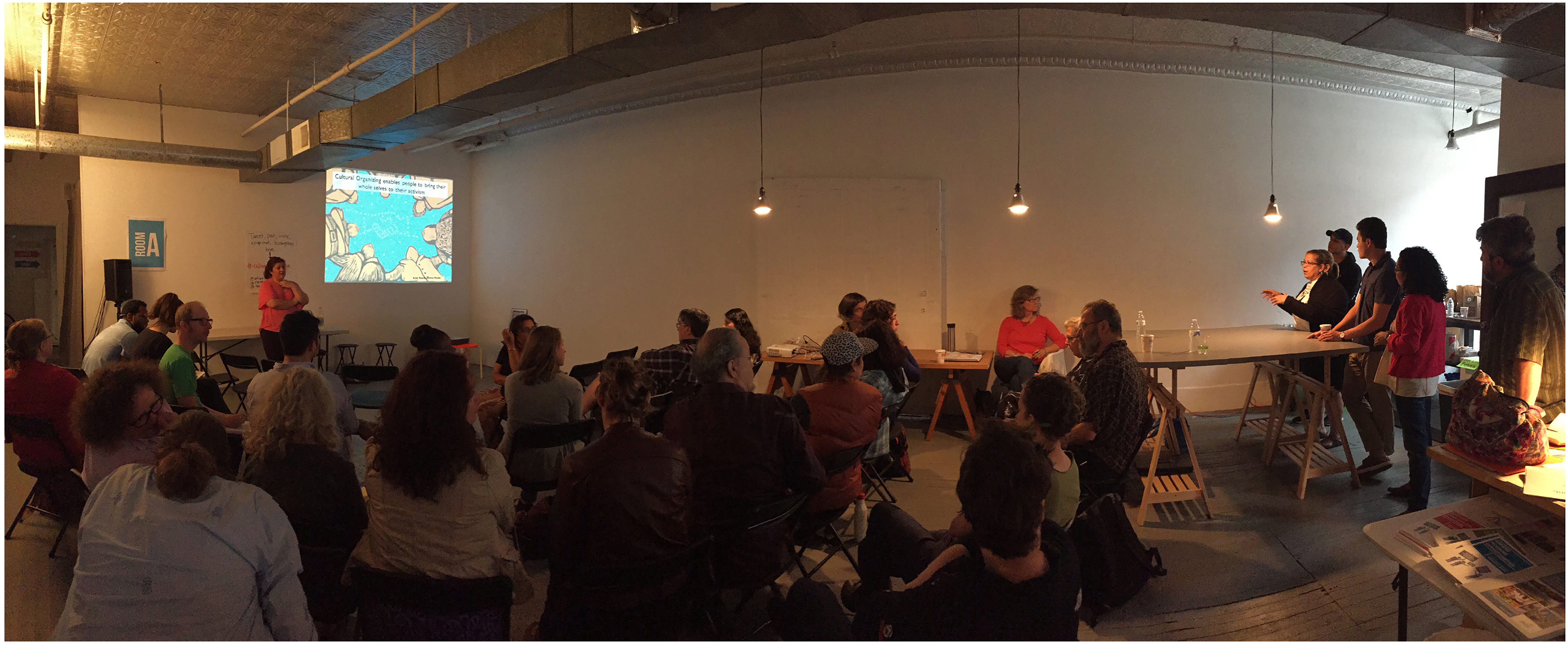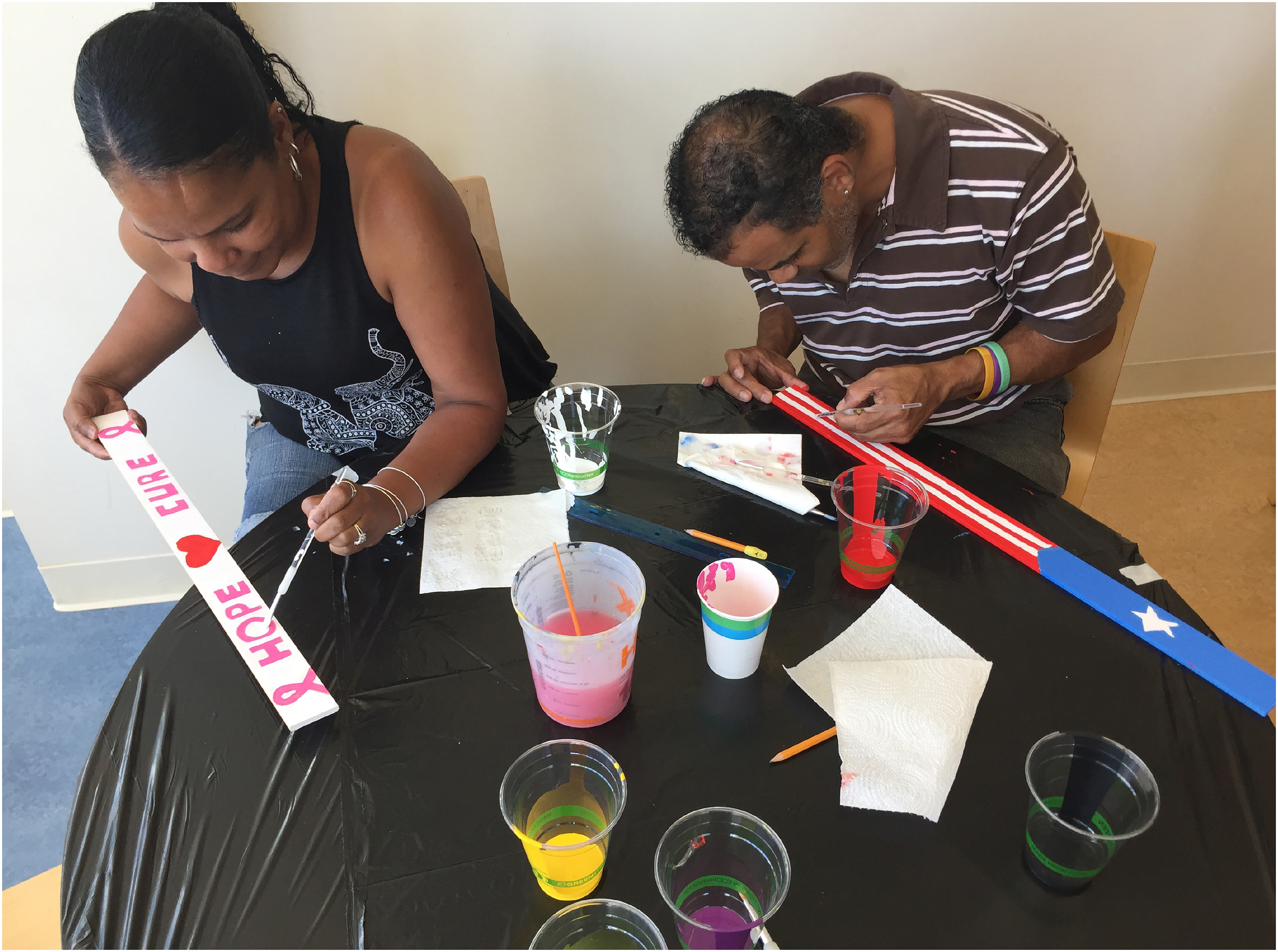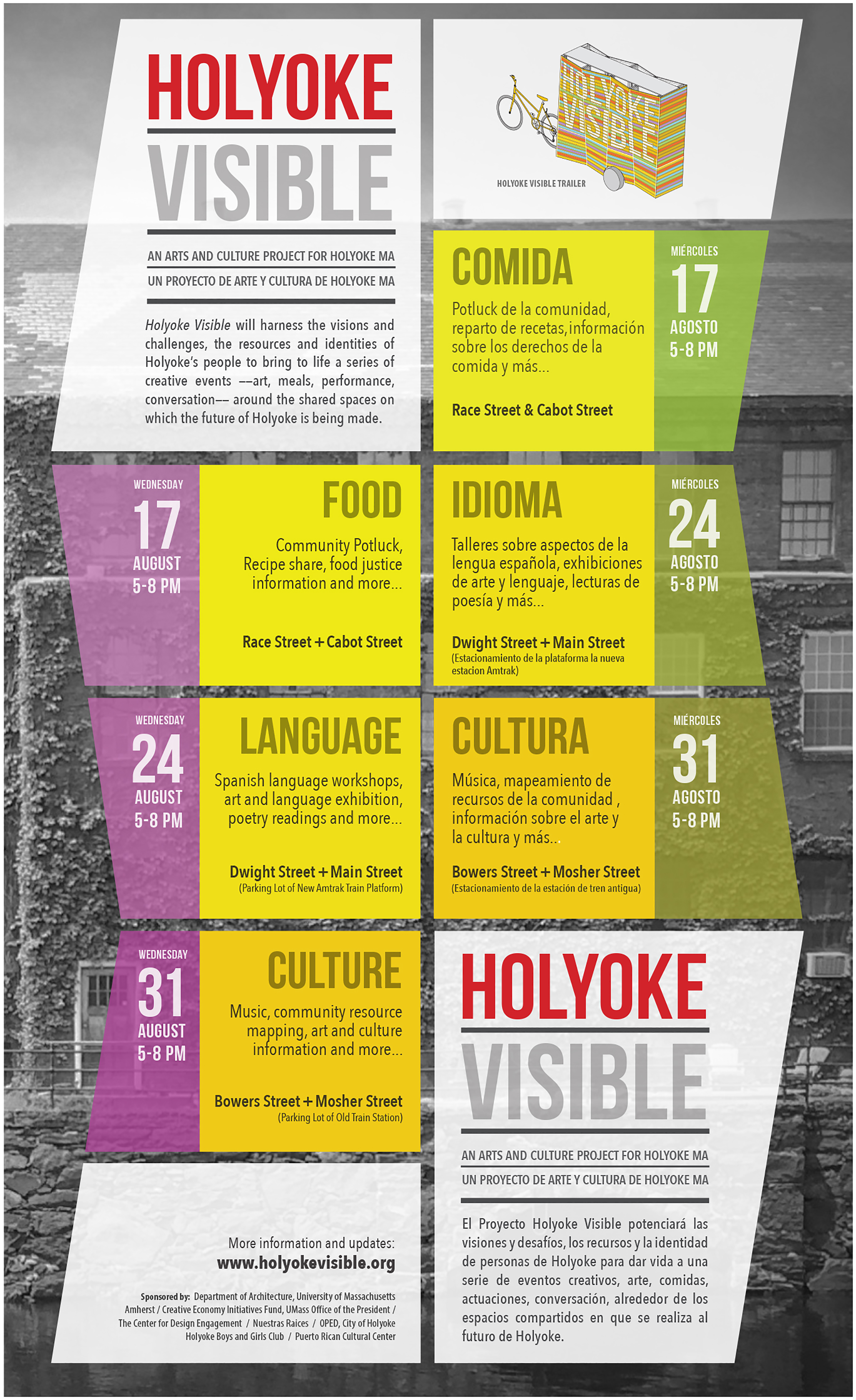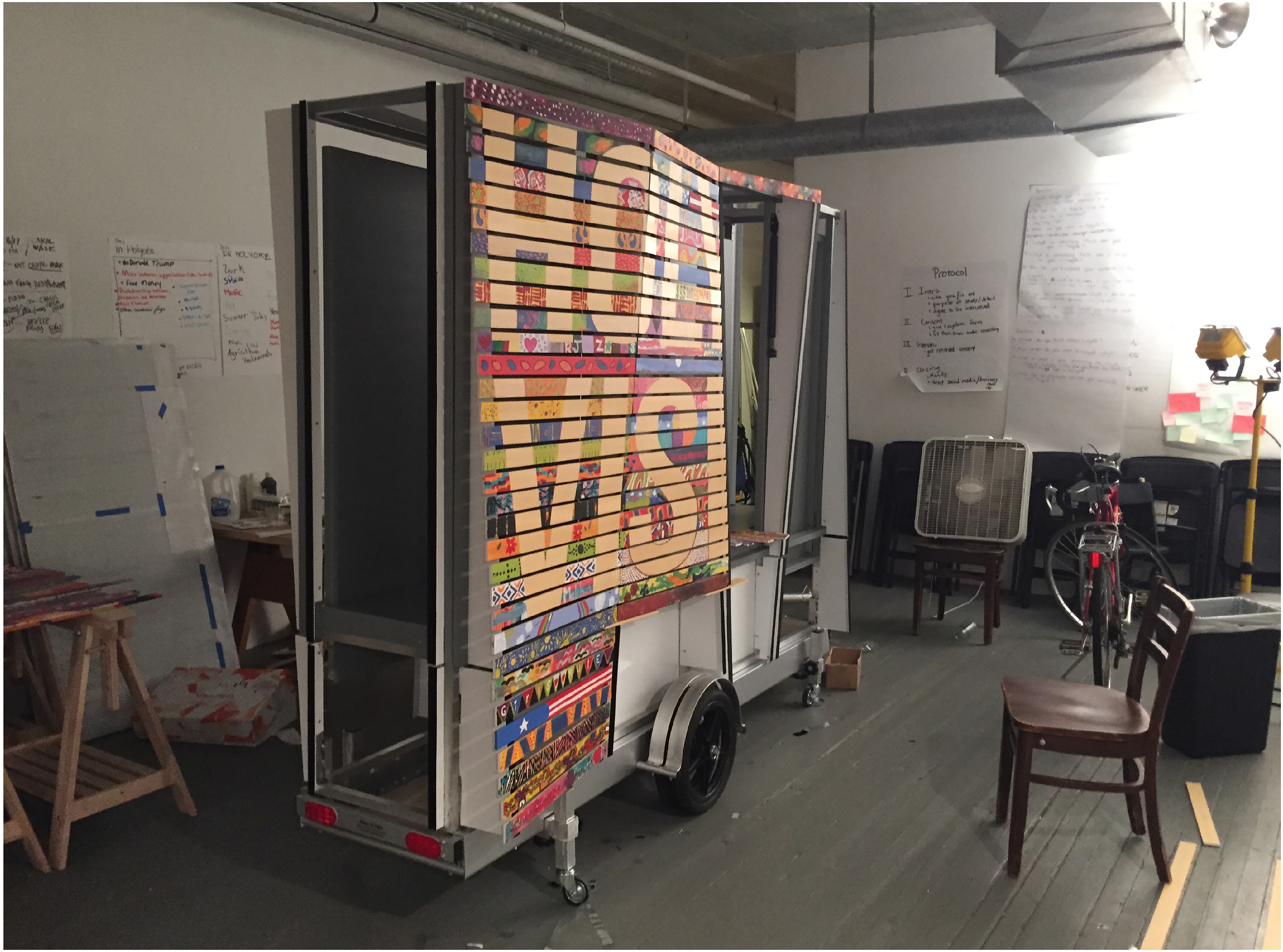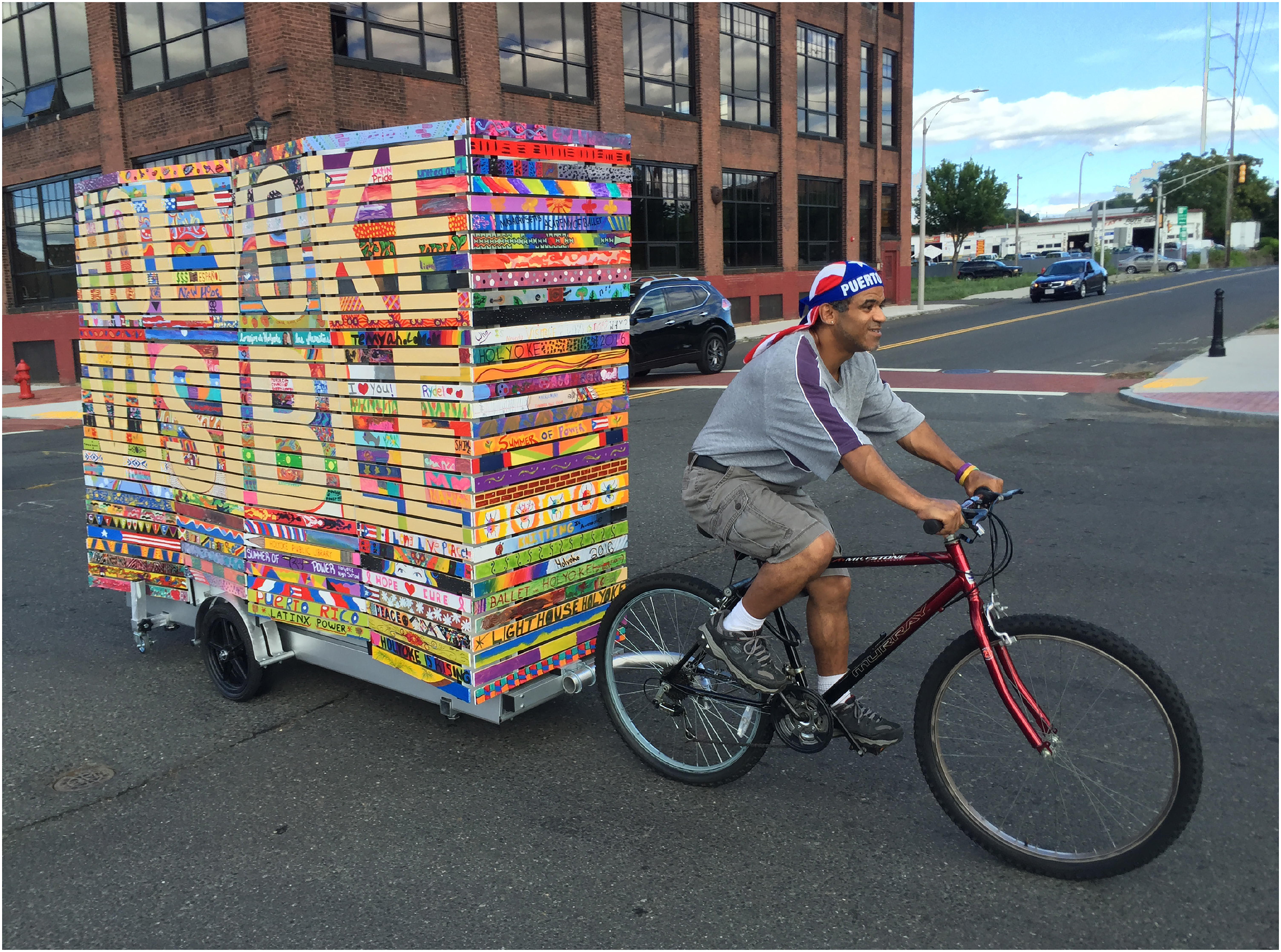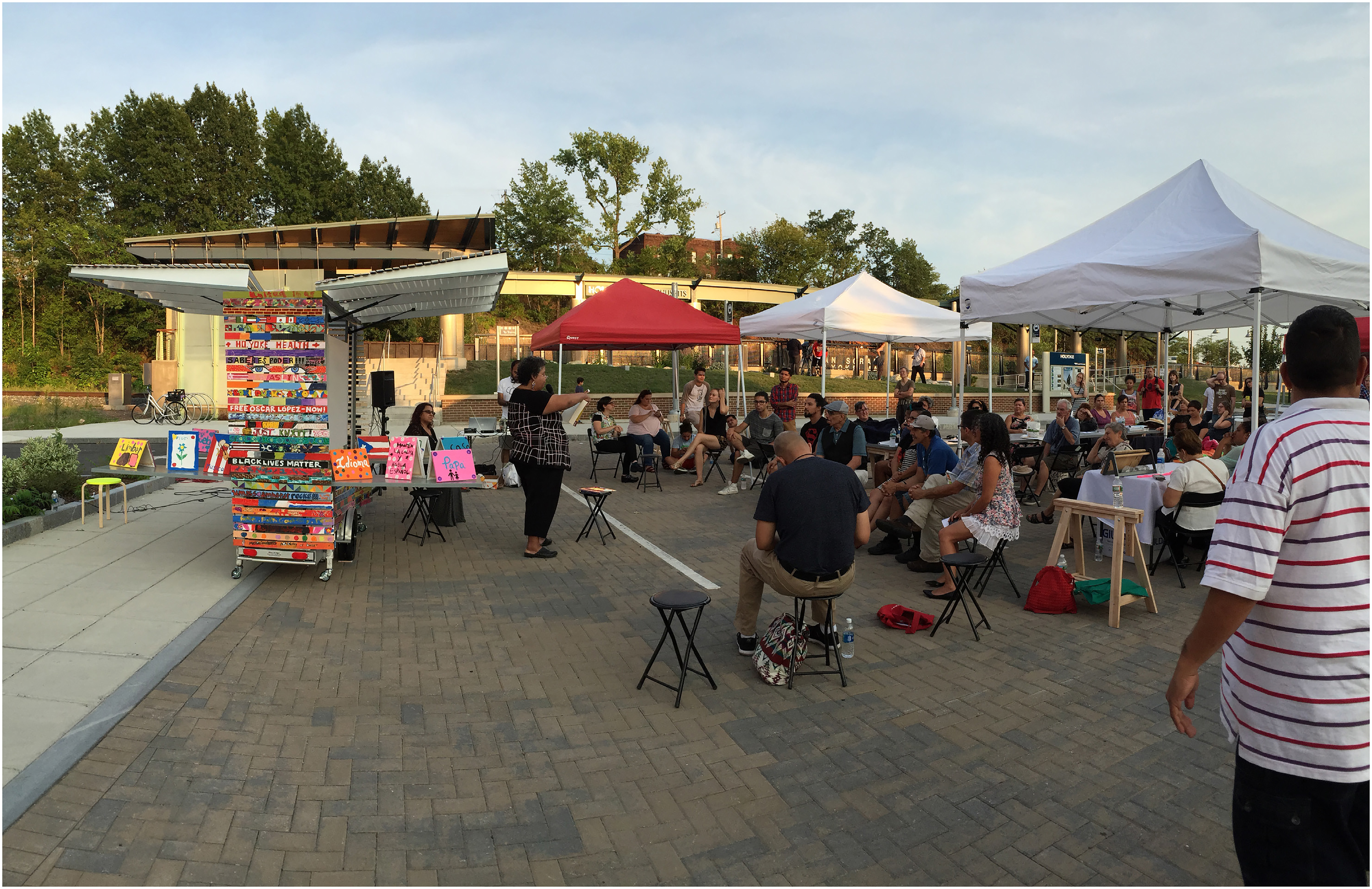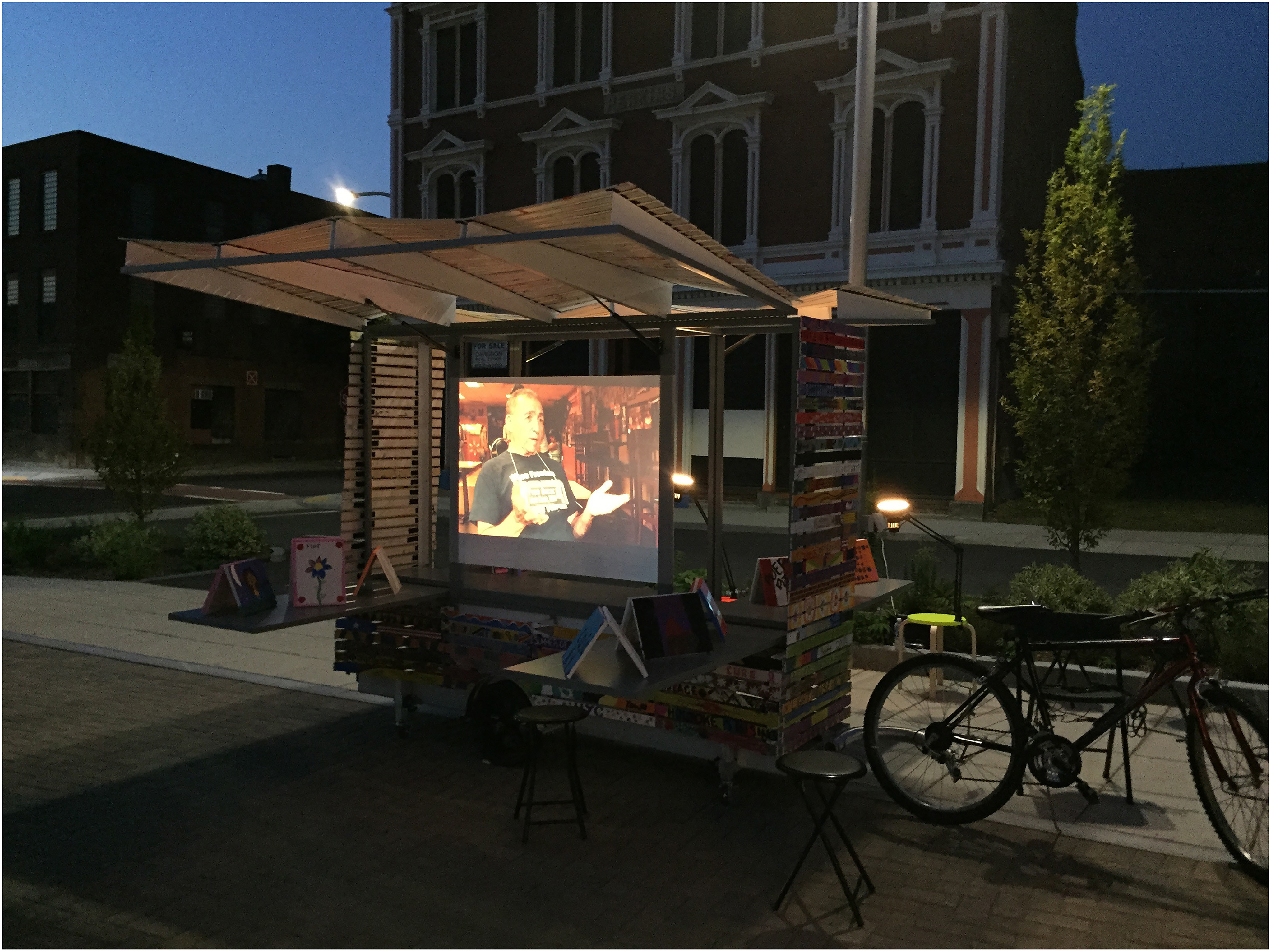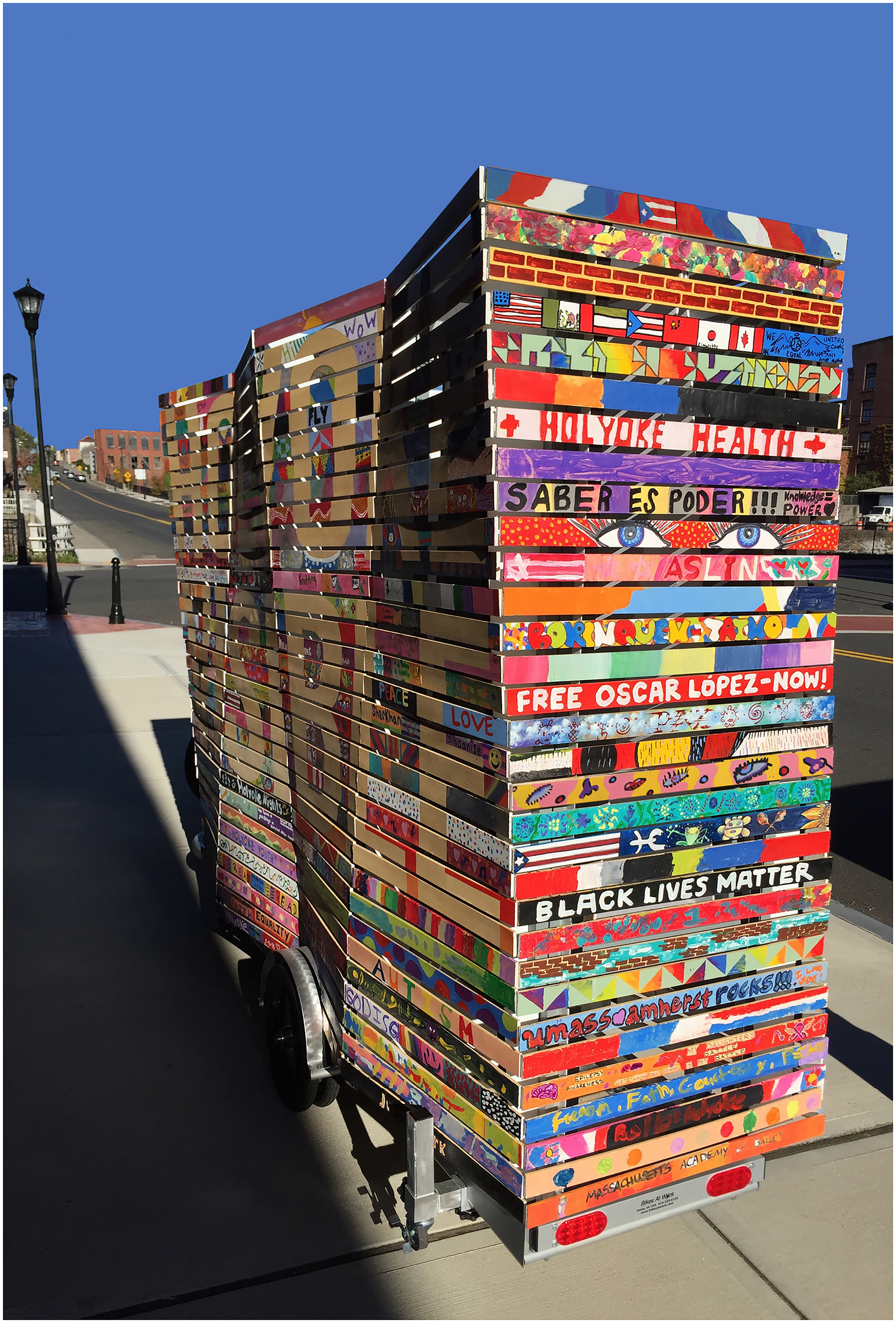Holyoke, Massachusetts is a small post-industrial city in Western Massachusetts that, uniquely, has a Latinx (and primarily Puerto Rican) population of just over 50%. The city’s current political and cultural climate has been shaped by this characteristic, and residents navigate the contradictory conditions of many of today’s post-industrial cities: socio-economic disenfranchisement on the one hand, and the socio-cultural promise of a resilient community creatively making themselves visible in an urban environment that is not always supportive of their cultural and creative contributions.
Holyoke Visible was a public art and engagement project that grew out of this context. Supported by a “Creative Economy” grant from the University of Massachusetts Amherst, my Department of Architecture colleague, Max Page, and I worked with our students and community partners to engage Holyoke residents in the four downtown wards (which are over 80% Latinx/Puerto Rican) in collaborative work that led to a complex reflection on a single question: What should be made more visible in Holyoke? The conversation started through a series of cultural organizing workshops in partnership with the national arts advocacy organization Arts & Democracy. Those workshops-led by community members-on storytelling, the theater of the oppressed, silkscreen printing, food justice, and podcasting were all aimed at developing powerful tools to connect creative practices, activism, and community organizing.
The workshops led to another series of community conversations that examined the question of what should be made more visible in Holyoke with greater depth. Those conversations explored the struggles of having the community’s own experiences and cultural contributions to the city undermined or undervalued. To challenge this cultural invisibility, community members identified three key themes-Food, Language, and Culture-and we collectively designed a series of pop-up events to make these community practices more visible to Holyoke residents and visitors alike. Each event was co-organized with a community-based organization that promotes and supports each of these activities in the city. At the Food event, residents collected and swapped recipes, heard presentations on food justice/sovereignty and, of course, ate excellent Puerto Rican cuisine. The Language event explored Holyoke as a bilingual city with a bilingual poetry reading. The Culture event cultivated a sense of identity, purpose and belonging through presentations and performances on Puerto Rican music, dance and other creative traditions.
One of the prominent designed elements of the project was the Holyoke Visible Trailer, which was transported to each event location by bicycle and popped open to create a space for art, meals, performance, and conversation. The surface of the trailer was made up of more than three hundred 2″ × 24″ slats that were painted and prepared by artists, youth, and residents of Holyoke (through a series of community paint-parties) to create a movable collective work that catalyzed each event.
Holyoke Visible was collectively imagined and realized to highlight and make visible the everyday cultural practices of the Puerto Rican community in Holyoke and support a project of creative place-keeping, that the writer and cultural activist Roberto Bedoya has described as creating spaces that “enacts identity and activities that allow personal memories, cultural histories, imagination, and feelings to enliven the sense of ‘belonging’ through human and spatial relationships.”
Joseph Krupczynski is a Professor in the Department of Architecture and the Director of Civic Engagement & Service-Learning (CESL) at the University of Massachusetts Amherst. He is also one of the founding directors of the Center for Design Engagement (CDE), a non-profit community art/design resource center in Holyoke MA. A first-generation college student from a Puerto Rican and Polish family, Krupczynski’s work is founded on cross-cultural investigations that bridge ideas and places. As an educator, university administrator, and public artist/designer his scholarship and creative work explores spatial justice, Latinx identity, and restorative creative place-making. He is a co-editor of the book, Anti-Racist Community Engagement: Principles and Practices (Campus Compact, 2023), and co-edited the volume (in collaboration with Mari Castañeda), Learning from Diverse Latinx Communities: Social Justice Approaches to Civic Engagement (Lang, 2017).


